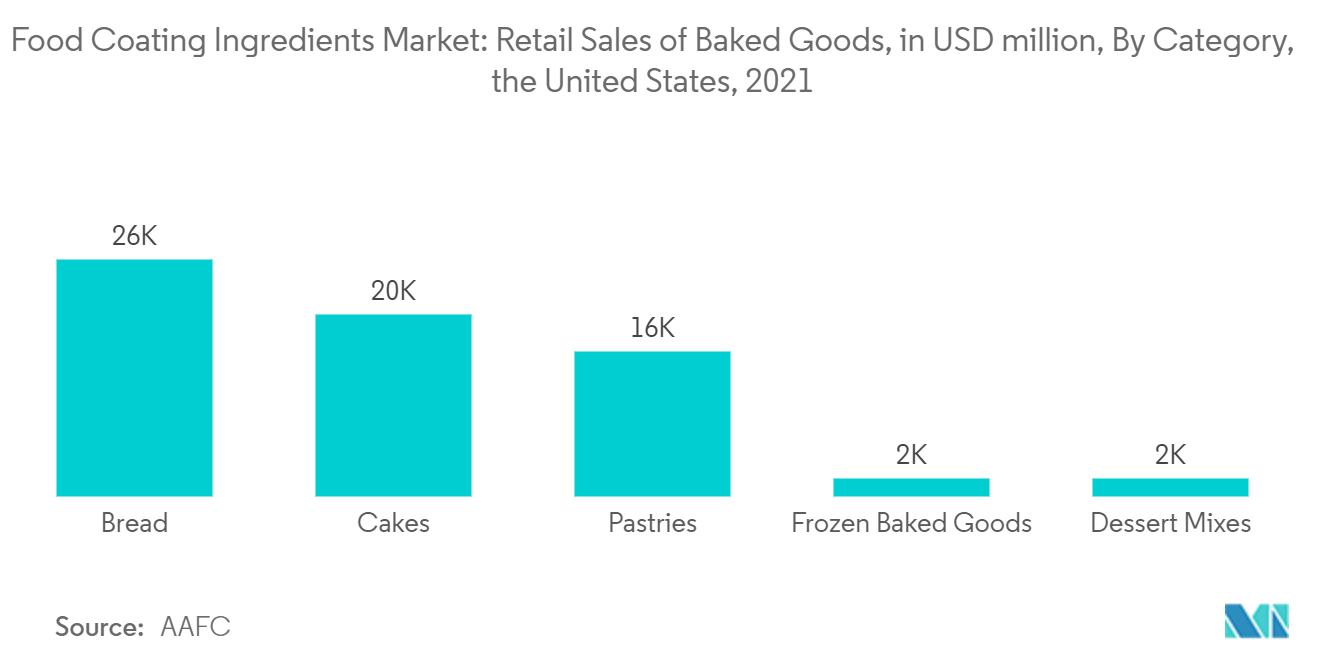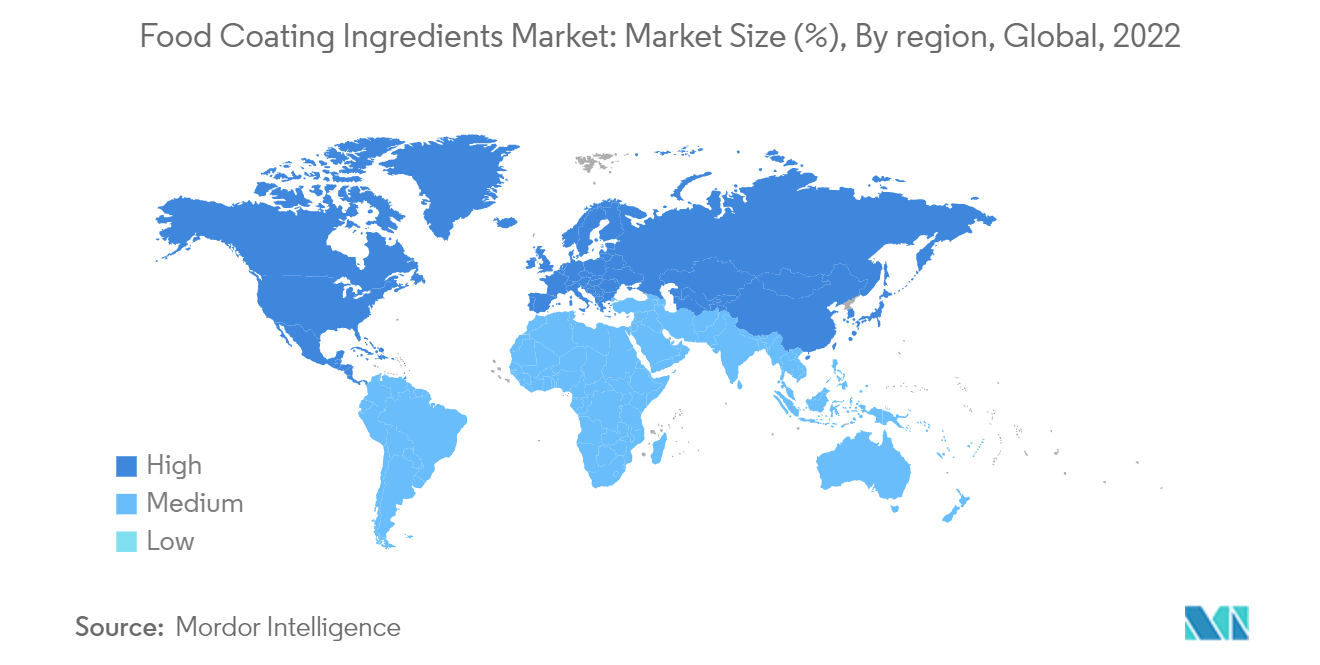Market Trends of Food Coating Ingredients Industry
Increased Consumption of Bakery and Confectionery Products
The consumption of confectioneries and bakery products, such as wafer bars, pastries, bread, and cookies, has increased significantly in recent years owing to the demand arising from children, especially chocolate-coated products. For instance, according to the Government of Canada, last year, Canada saw recorded retail sales of USD 6.6 billion worth of baked goods and is expected to reach USD 7.8 billion by 2026. These coatings, apart from improving the flavor and texture, extend the shelf-life of the product by acting as a barrier to moisture loss.
Additionally, the traditional process of enrobing was slow and involved manually dipping; however, increased demand for these products has opened room for many technologically advanced techniques, such as electrostatic coating, therefore, enhancing the production rate and meeting the demand of the consumers.
Furthermore, bakery and confectionery products claiming to contain natural and organic ingredients have witnessed increased demand, and this concept has been evolving across other markets as well, including food coating ingredients. Product launches with various label claims, such as no artificial additives, no preservatives, non-GMO, and reduced sugar, are becoming increasingly popular. Thereby, the increased consumer demand for nutritious products and the rising clean-label claims on products have accelerated market growth. For instance, in May 2022, Blommer Chocolate Co. and DouxMatok introduced coatings in collaboration with Incredo Sugar to reduce sugar in a variety of food processing steps like panning, enrobing, and molding. According to the companies, no high-intensity sweeteners or polyols were used in the creation of the new line of milk, dark, and white coatings, and sugar content has been cut by up to 50% (sugar alcohols). With these components, Chicago-based Blommer claims it can reduce sugar content in products like nut butter cups, bars, and chocolate chip cookies by more than 40%.

Asia-Pacific is the Fastest-growing Region
In the Asia-Pacific region, India and China specifically are the fastest-growing region due to the robust demand for confectionery and bakery industries, along with the growing popularity of ready meals and convenience foods among the working population has propelled the growth of the market. According to the United States Department of Agriculture (Foreign Agriculture Service), the sales value of ready meals in India last year was USD 172.6 million.
Additionally. according to the United States Department of Agriculture, the edible coatings ingredients like protein or polysaccharides can keep fruits and vegetables fresh for up to a month in the fridge without their going soft, losing weight, or picking up any harmful bacteria and minimize the amount and cost of packaging and related packaging waste. Thus, ready-to-eat food has gone a long way since its introduction in the form of instant noodles, soup, frozen vegetables, and frozen snacks, which significantly utilize food coatings for the preservation of taste, flavor, and texture.
Furthermore, the bakery products market is experiencing significant growth as players operating in the market continuously differentiate their offerings in terms of ingredients, flavors, and composition. Also, there is an influence of Western flavors and culture in some Asian countries, where consumers are increasingly seeking convenient foods, which presents opportunities for the food coating ingredients for these growing industries.

